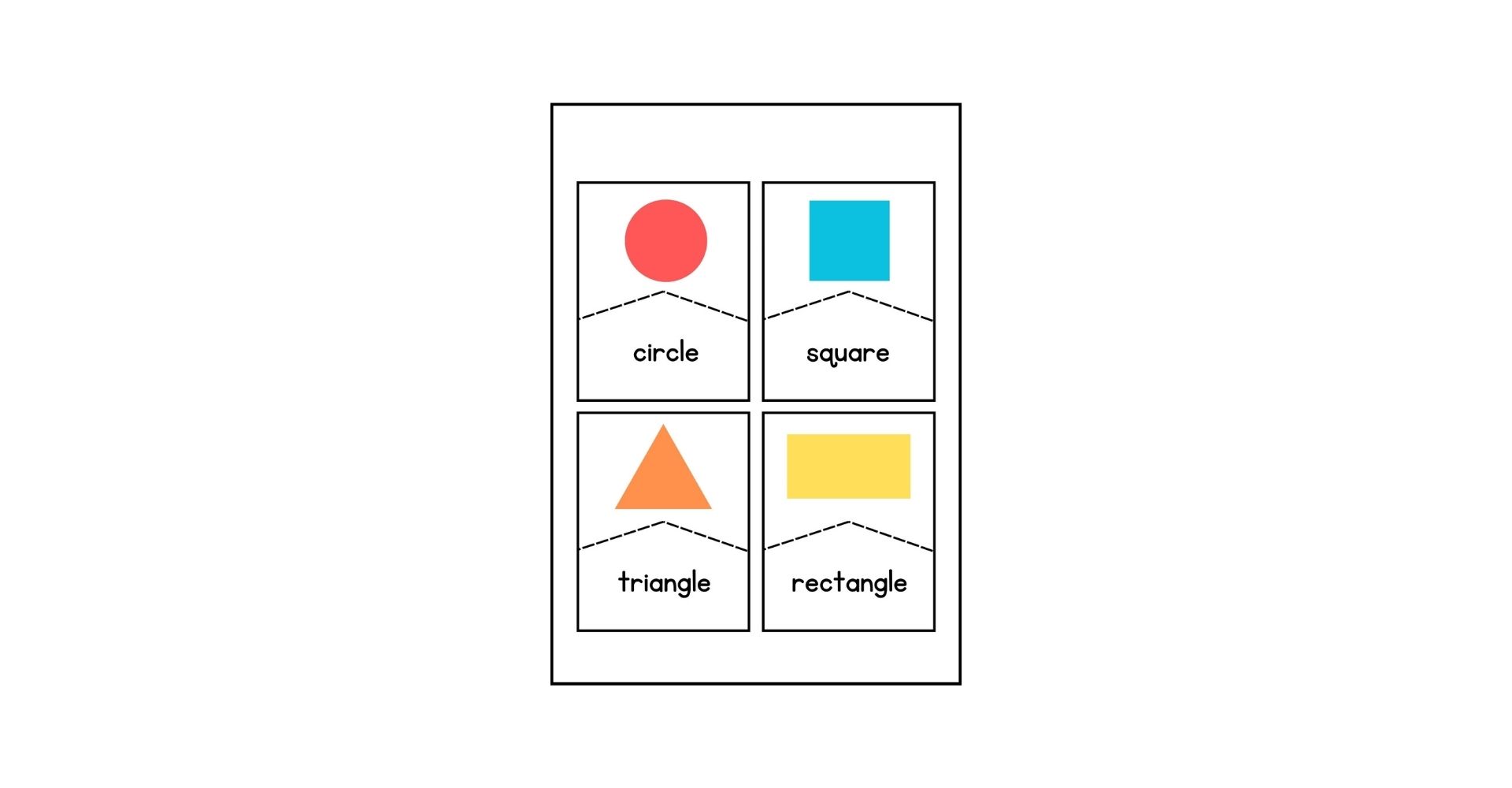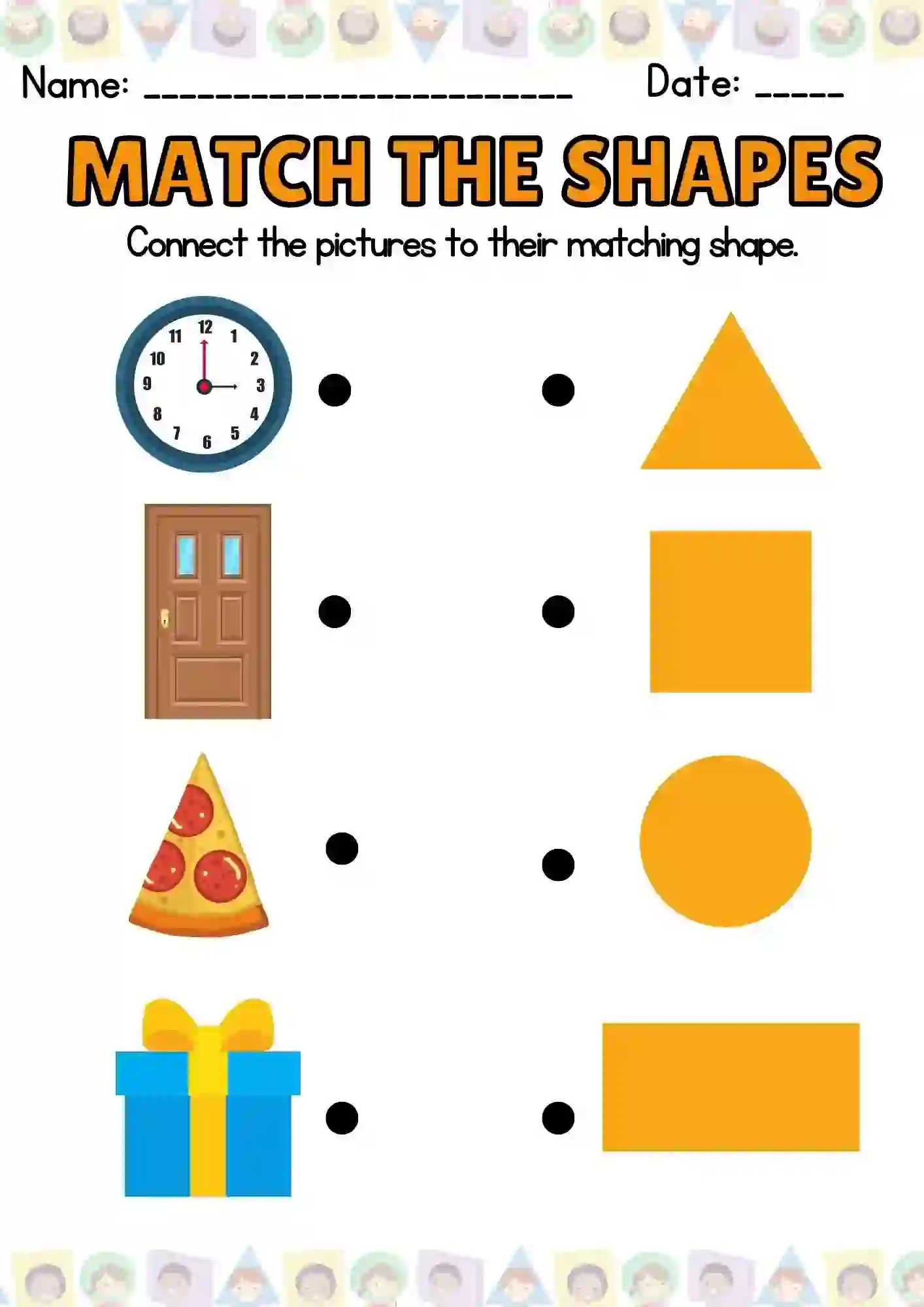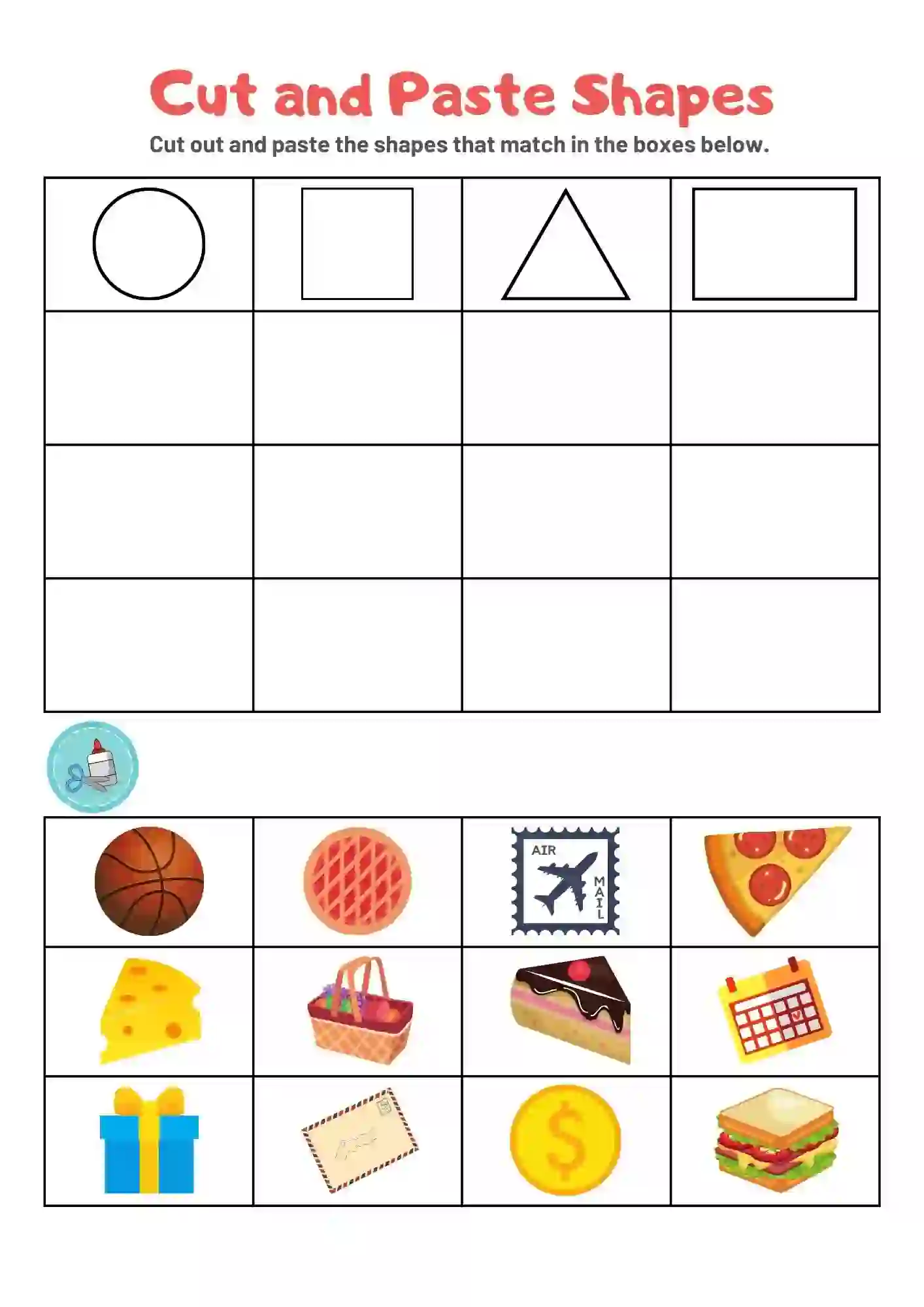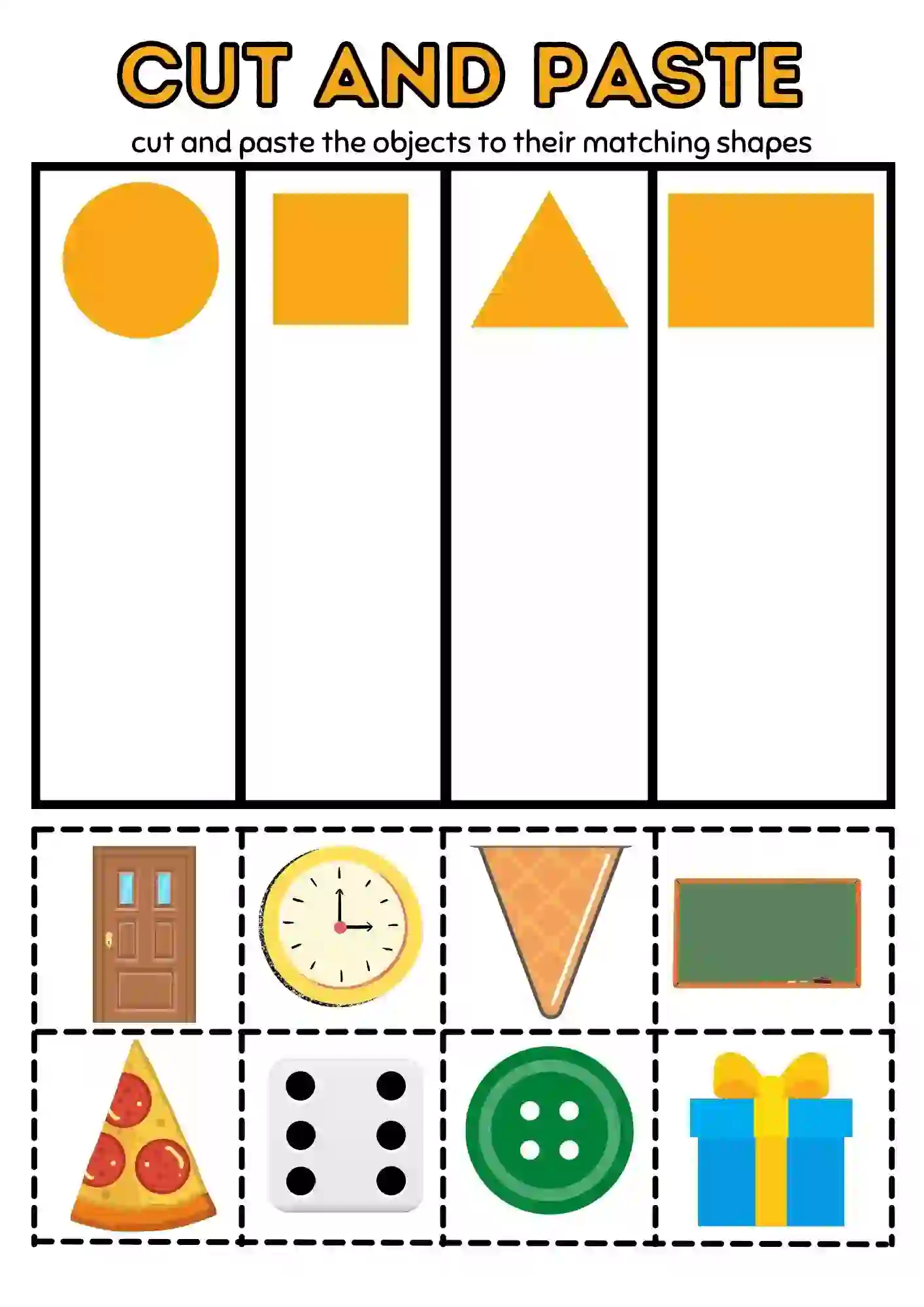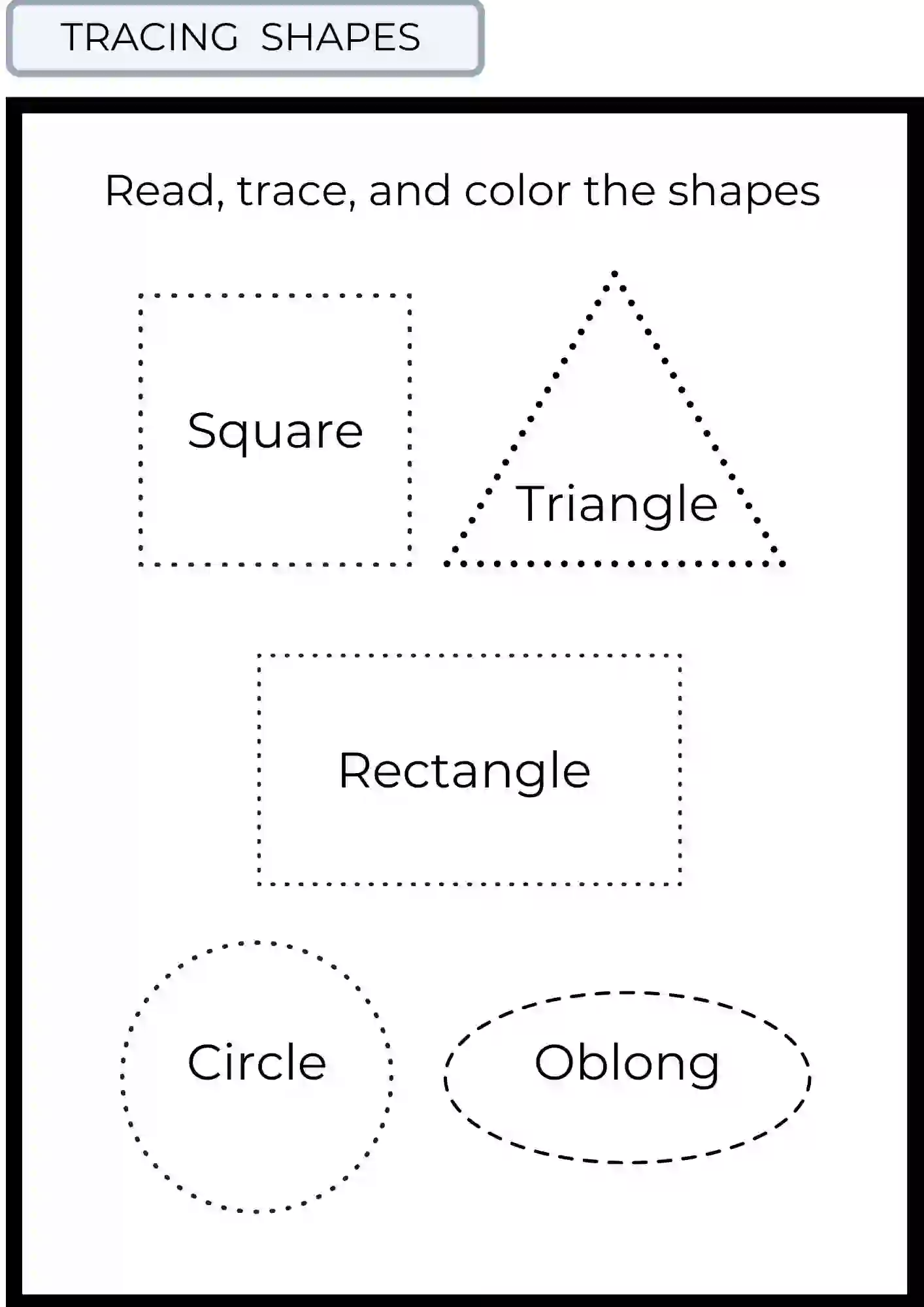Have a Look at LkgWorksheets’ new “Shapes Worksheets” for nursery and LKG. This worksheet is packed with vibrant activities to help you discover the world of geometry. This worksheet is printable! That means you get to use your hands and really get into learning. As you work through these activities, you will learn important stuff. Like figuring out where things are in space, training your eyes to see things clearly, and getting better at solving problems.
Preview
Shapes Worksheet Details:
| Feature | Details |
|---|---|
| Format | Downloadable PDF |
| Number of Pages | 7 |
| Content | Shapes Worksheet For Nursery & Lkg |
| Illustrations | Yes, playful and age-appropriate |
| Suitable For | Nursery, Lkg & Ukg |
| Printable? | Yes |
Learning Objectives: The primary objectives of this worksheet are to:
- This worksheet will help you get to know some simple shapes like circles, squares, triangles, rectangles, and ovals. You’ll see them all over the place!
- Also helps In knowing the shapes and spotting them in different situations, from things you see every day to more abstract ideas.
- By playing around with the shapes and seeing how they fit together, you’ll start to understand more about how things are arranged in space. Like, how big they are, what color they are, or which way they’re pointing.
- And the best part? You get to let your creativity run wild! You can use these shapes to make all sorts of cool art and designs. It’s like having your own shape-based superpower!
Who is this for?: These worksheets are suitable for the children in LKG, UKG, nursery, preschool, and kindergarten, providing adaptable activities suitable for learning.
Materials Needed:
- Printed copy of the Shapes Worksheet.
- Crayons, markers, or colored pencils for coloring and drawing activities.
How to Use:
- Introduction to Shapes: First, show the kids each shape and talk about what makes it unique. You can even mention things they see every day that have that shape.
- Visual Identification: Next, ask them to find and circle the shapes in the worksheet.
- Shape Tracing: After that, they can practice tracing the shapes. It’s good for their hand muscles and helps them remember what the shapes look like.
- Shape Sorting: Finally, you can do more activities with the shapes, like sorting objects by shape or making cool pictures with shapes cut out from colored paper.
Tips:
- Start by getting hands-on. Bring in stuff they can touch, like playdough or puzzles, so they can really feel what they’re learning.
- Next up, let’s pump up the words. Use fancy shape words and get them talking about what shapes feel and look like.
- And finally, let’s make it a game. Get everyone moving with games like “Simon Says” where they copy shape actions.
Additional Activities:
- Shape Hunt: Get kids moving and searching for shapes! Whether it’s in the classroom or at home, challenge them to spot and name shapes they see around them.
- Shape Art: Let their creativity shine with art projects centered around shapes. Think making cool collages with different shapes, using shape stamps for fun designs, or getting messy with shape-themed finger painting.
- Outdoor Exploration: Take the learning outside! Explore nature and discover shapes in leaves, rocks, and clouds. It’s not just about finding shapes; it’s also about chatting about how shapes work in the natural world.
Download the PDF File Here:
Click to Download Shapes Worksheet PDF
How to Print:
- Get the PDF: First things first, make sure you download the PDF. Just click on the link we’ve given you, and you’re good to go!
- Set Up Your Printer: Now, let’s talk about your printer settings. You can adjust things like the paper size, how the paper is oriented (like portrait or landscape), and even how clear you want the printing to be.
- Check Before You Print: Before hitting that print button, take a peek at the print preview. This lets you see how everything’s going to look once it’s printed out. You want to make sure everything’s nice and clear for your little learners.
- Start Printing: Once you’re happy with how things look, go ahead and start printing. Sit back, relax, and wait for those sheets to come out of the printer.
Tips for Parents and Educators:
- Modelling: Get excited and curious about shapes yourself, and let that enthusiasm rub off on the little ones. When they see you enjoying it, they’ll want to join in the fun too!
- Discovery: Guide them through exploring shapes by giving them little hints and nudges along the way. Extend their understanding by asking questions that make them think a little deeper.
- Cheer Them!: When kids try their best or figure something out, make sure to give them a big round of applause! Creating a positive atmosphere where it’s okay to make mistakes helps them feel confident to keep trying.
- Make shapes a part of everyday life: Whether you’re out for a walk or settling in for storytime, find ways to slip shape-related activities into your daily routine. It’ll keep learning fresh and exciting!
Common Mistakes and Solutions:
- Confusion with Similar Shapes: Sometimes, kiddos get stuck trying to tell shapes apart, like circles and ovals. We can show them pictures and do activities comparing the two shapes to help them spot the differences.
- Difficulty with Shape Recognition: Some kids might have a tough time recognizing shapes, especially when they’re twisted around or shown in different situations. Bringing in real-life stuff and hands-on activities can help them get the hang of it.
- Tricky Fingers: For little ones who struggle with tiny movements, like tracing or coloring inside the lines, we can switch things up. Chunky markers or other tools can make it easier, or we can try activities that boost their hand-eye coordination and how well they can move their hands around.
With this worksheet and fun stuff to do along with it, They’ll learn all about shapes and how they work, which is super important for understanding things like math and art.
